Working Together on a Project
Paola Diotallevi has been an English teacher since 1986. She is working at Scuola Media Bartolo da Sassoferrato, Sassoferrato AN. She studied Foreign Languages and Literatures at Perugia University. She received a Master’s Degree in Applied Linguistics from Urbino University 1985. Email: pla.diotallevi@libero.it
Note
There are some imperfections but the work was entirely done by students, included three boys with disabilities. Paola tried to create a sense of belonging at this class magazine, so now all the students will be very proud of its publication! There are some parts in Italian regarding annual school planning which some may find useful others will have to ignore.
Introduction
A competence based learning cannot neglect the concept of creativity, because it places emphasis on what learners are able to do after the teaching and learning process. According to Common European Framework “the learner’s different competences are closely related to individual characteristics of a cognitive, affective and linguistic nature, so the true learning will take place only when there is improvisation and creativity and personal involvement until the very beginning.” Situations and ideas must be created by students, not only given to them. Knowledge and abilities should be associated with something personal. Creativity is when the focus is on how the students can use the language, instead of their knowledge about the language.
“Who am I?” project
Last school year I proposed my students of the first year of Scuola Media to write a class magazine, titled “Who am I?” where they could explore themselves and their world, express their needs, aspirations, feelings. Starting from functions or situations developed in the units of their text book, they reached a personal and creative use of them. In this way I could observe how students were making creative use of language to communicate, to convey their messages…. Many activities included also tasks which required the students working together to achieve a shared goal. Students had to activate also skills such as communicating, managing conflict, expressing their personal point of view…..
Asking and giving personal information: a dialogue between a Romanian student, and Tunisian one roused their curiosity. The conversation went on beyond the simple dialogue, it offered the opportunity to intercultural reflections.
Talking about themselves: students revealed secret aspects of their personalities through star signs or the choice of an animal.
Talking about abilities: they simulated auditions where they could talk about their abilities, competences and aspirations.
Expressing likes and habits: it was a good opportunity for a class discussion on their way of spending free time. Some ideas to make teenagers’ free time more edifying and interesting were proposed to CCRR (teen council) that every year identifies areas of improvement for teen programs and teen recreation policies and suggests solutions to town of Sassoferrato staff.
PLANNING:
PRIMA UNITÀ DI INSEGNAMENTO/APPRENDIMENTO
Titolo: Facciamo conoscenza
Destinatari: alunni delle classi prime
Docenti impegnati nell’UDA: docente di lingua straniera e insegnante di sostegno
Articolazione dell’UDA
RIFERIMENTO ALL’EDUCAZIONE ALLA CONVIVENZA CIVILE
Identità
- relazione con gli altri
- impara ad interagire con i compagni e con gli adulti
Strumenti culturali
- conosce e pratica funzionalmente la lingua straniera
- usa un vocabolario adeguato agli scambi sociali
- capisce messaggi orali ed è in grado di produrre brevi testi scritti adatti alle varie situazioni interattive
RIFERIMENTO AL POF
- essere consapevole delle modalità relazionali da attivare con coetanei e adulti
- b) raggiungere attraverso l’uso di una lingua diversa dalla propria, la consapevolezza dell’importanza del comunicare.
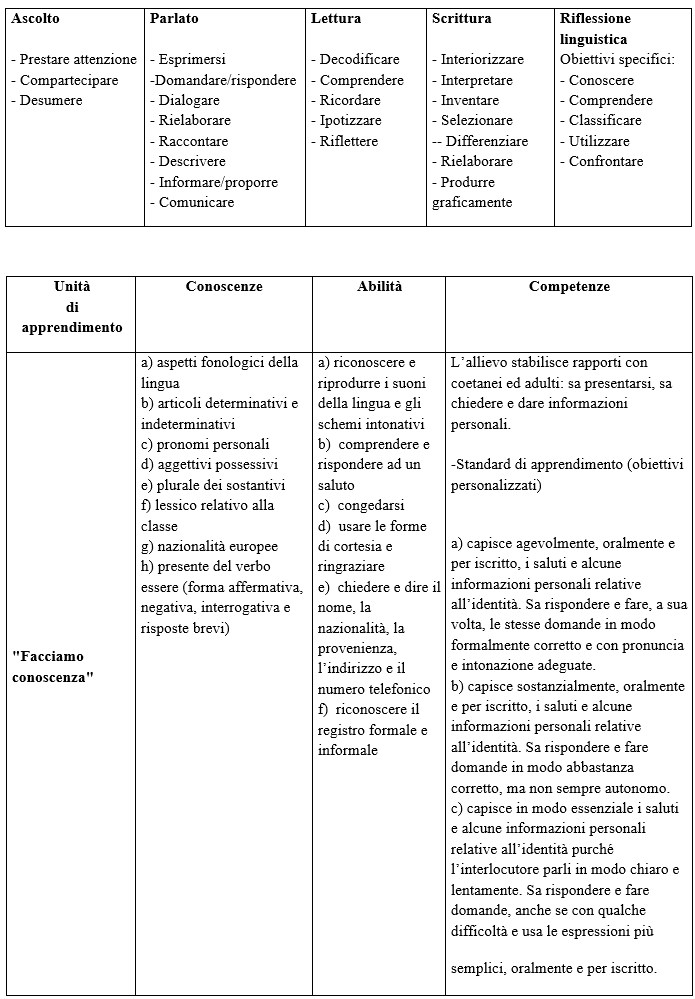
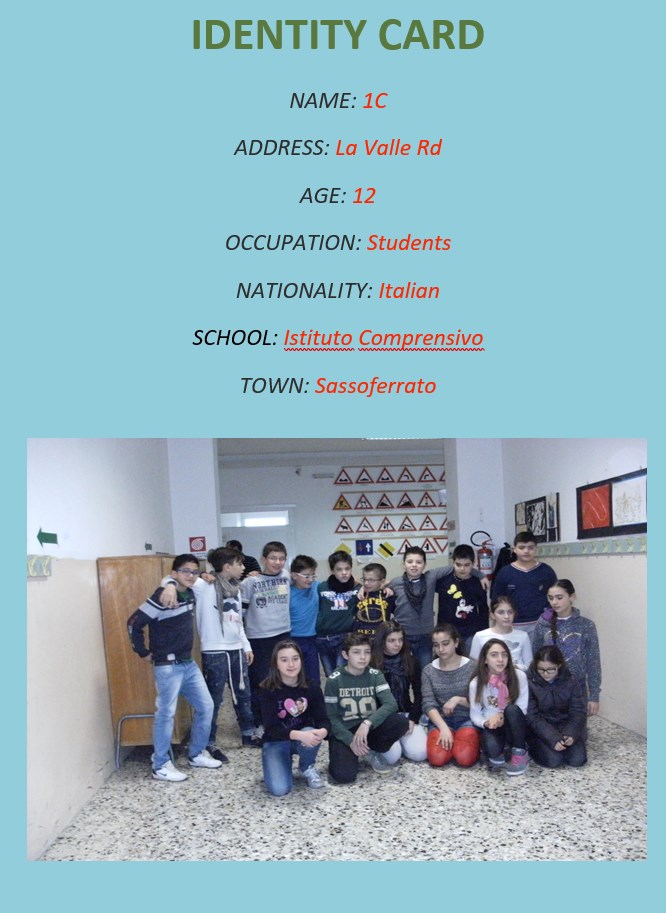
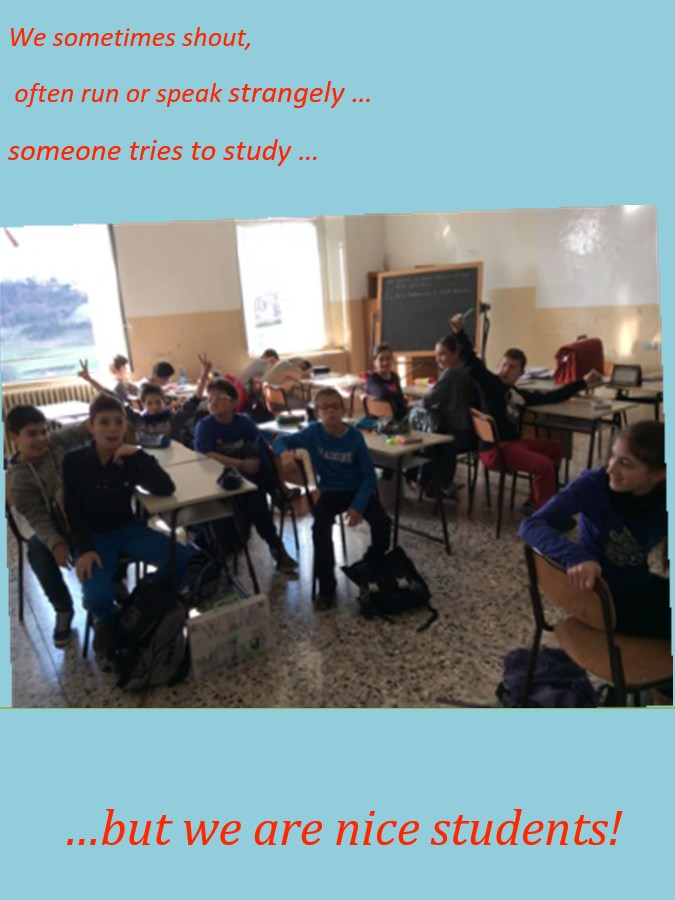
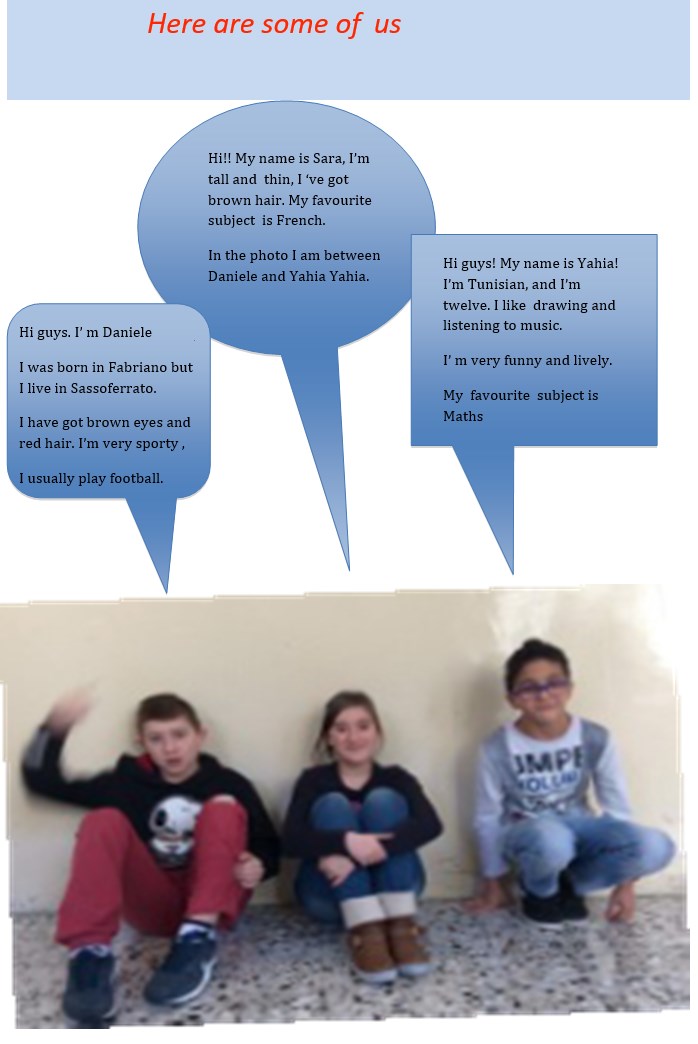
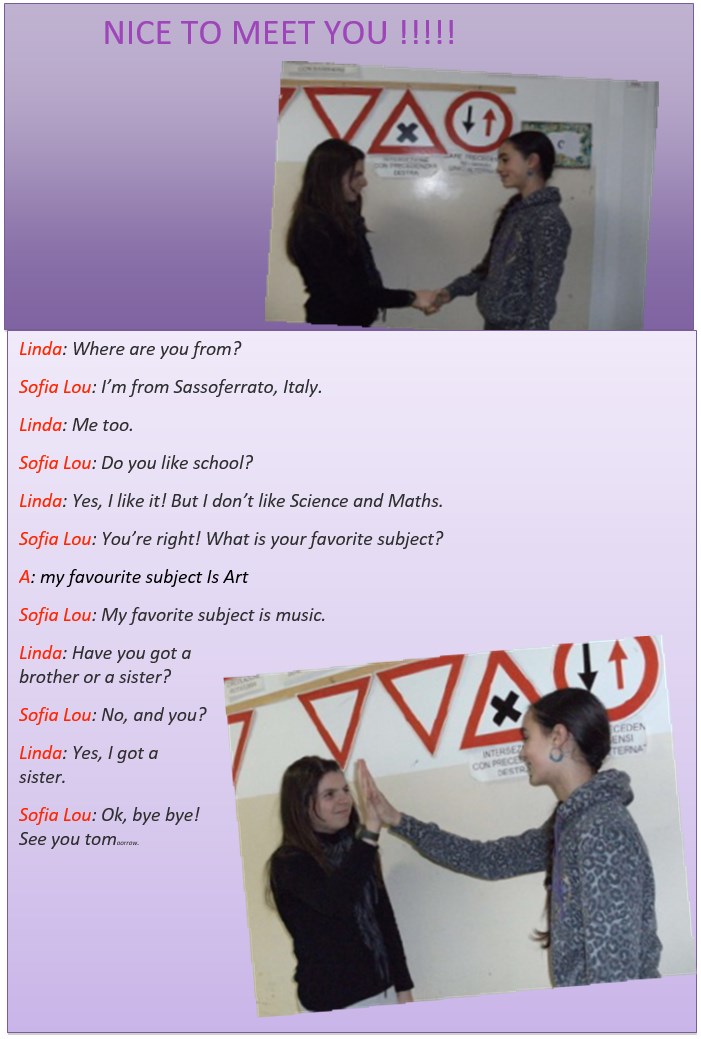
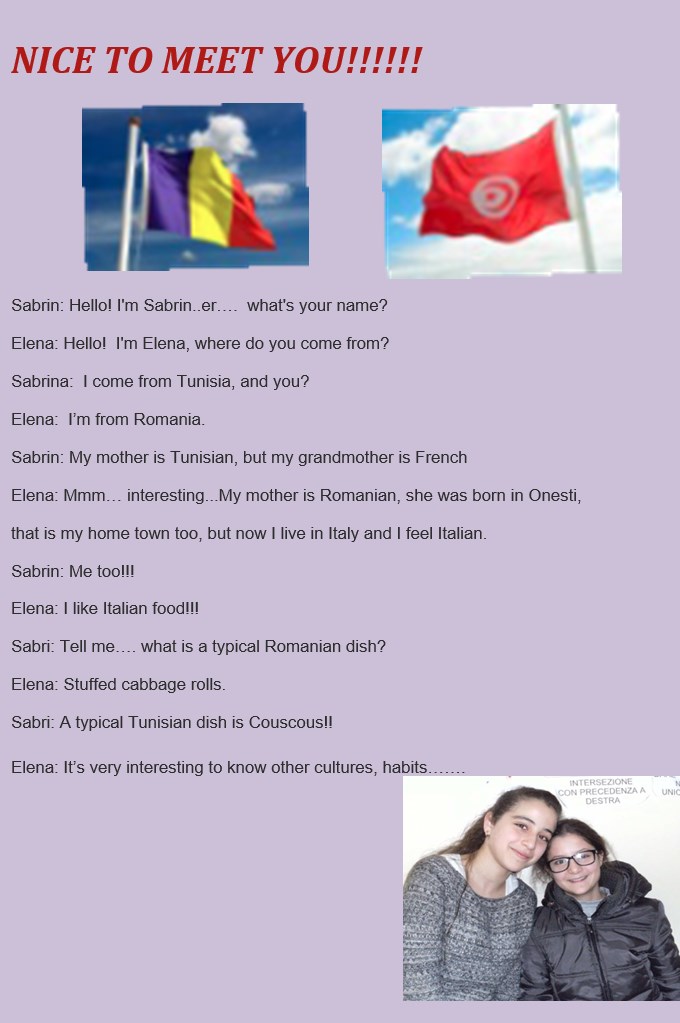
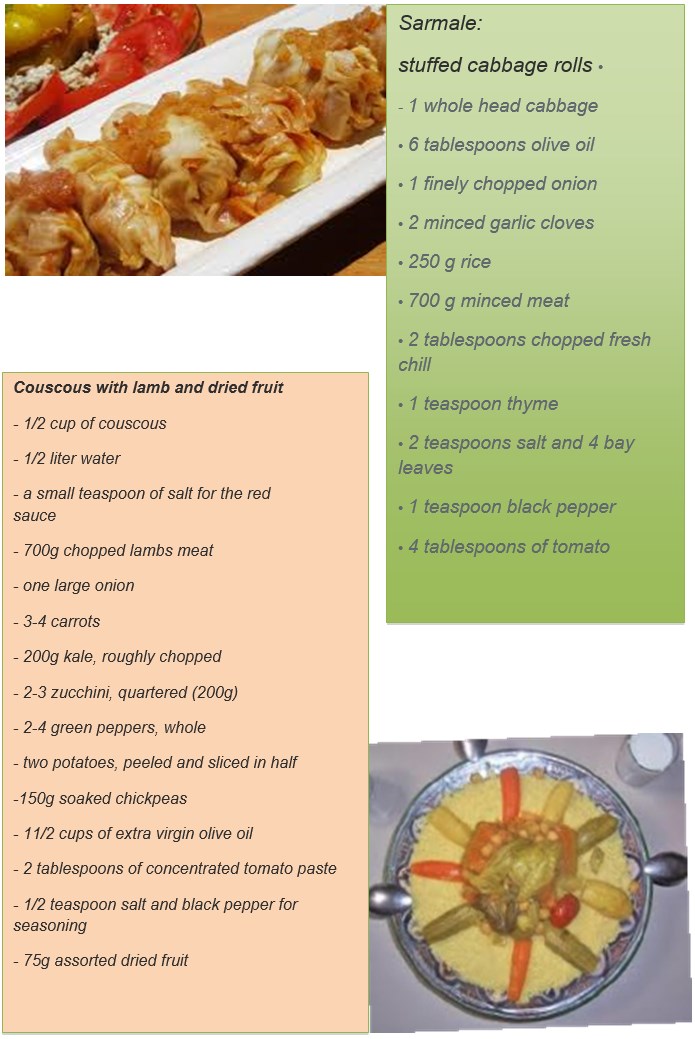
Physical Characteristics
“Physical characteristics are features about your body.
Physical characteristics can include a variety of things. Hairstyles and facial features play a big role, but they aren’t the main ones. Physical characteristics are what you see with the naked eye. They include anything you can describe about a person or group of people, just on sight.”
Physical Characteristics: What You Notice First
Build Characteristics
- Overweight
- Fat
- Plump
- Slim
- Thin
- Skinny
Height Characteristics
- Short
- Tall
Average height
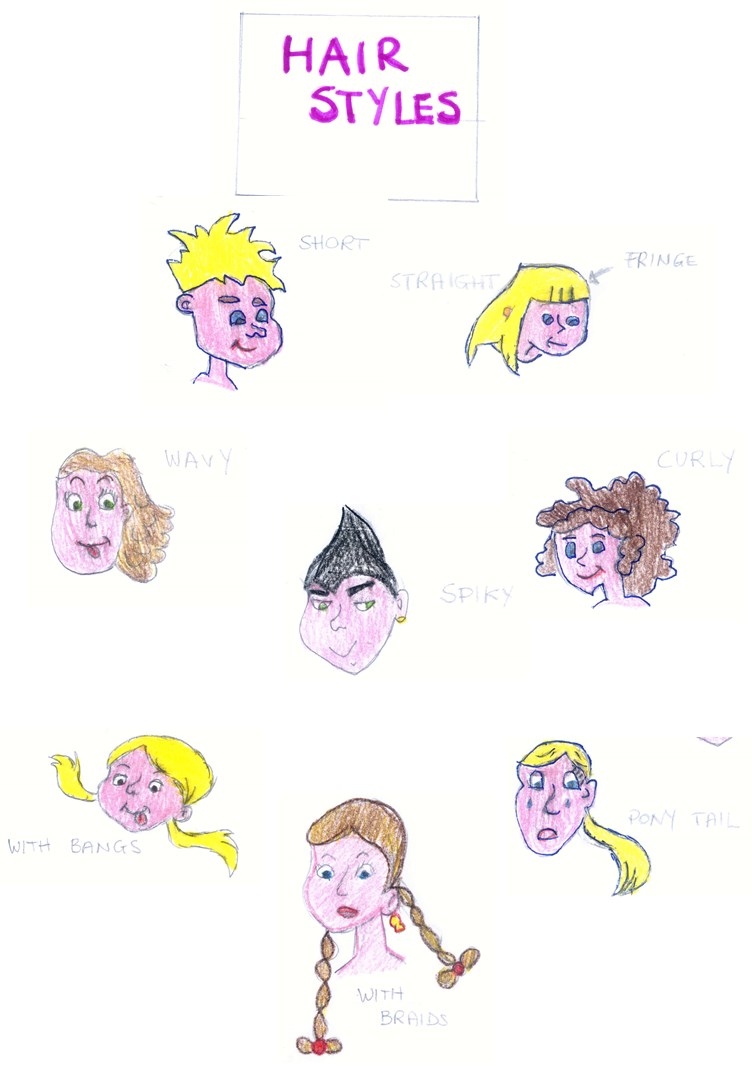
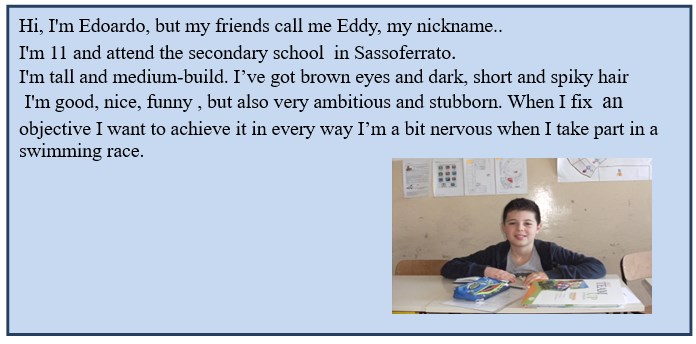
Hello, I’m Alex Mulas. I live with my family in Italy and I attend Secondary School “Bartolo da Sassoferrato”. I’m tall and slim. I’ve got green eyes and brown hair.
I’m good, nice but I’ve got quite a temper. When I’m angry I say some bad words. I’m not perfect……..but I’ll try to become a good boy!!!!!
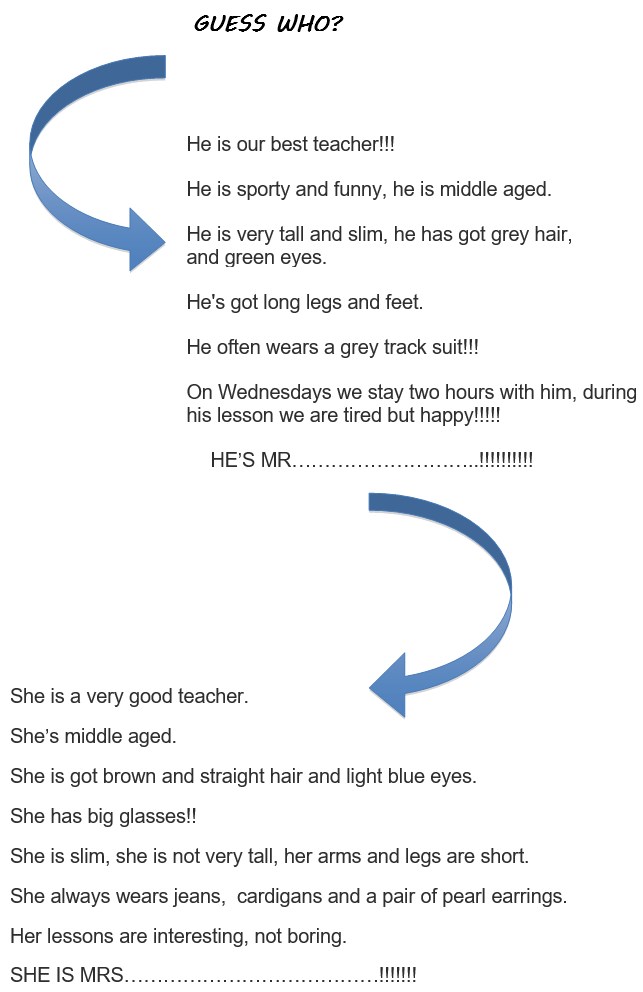
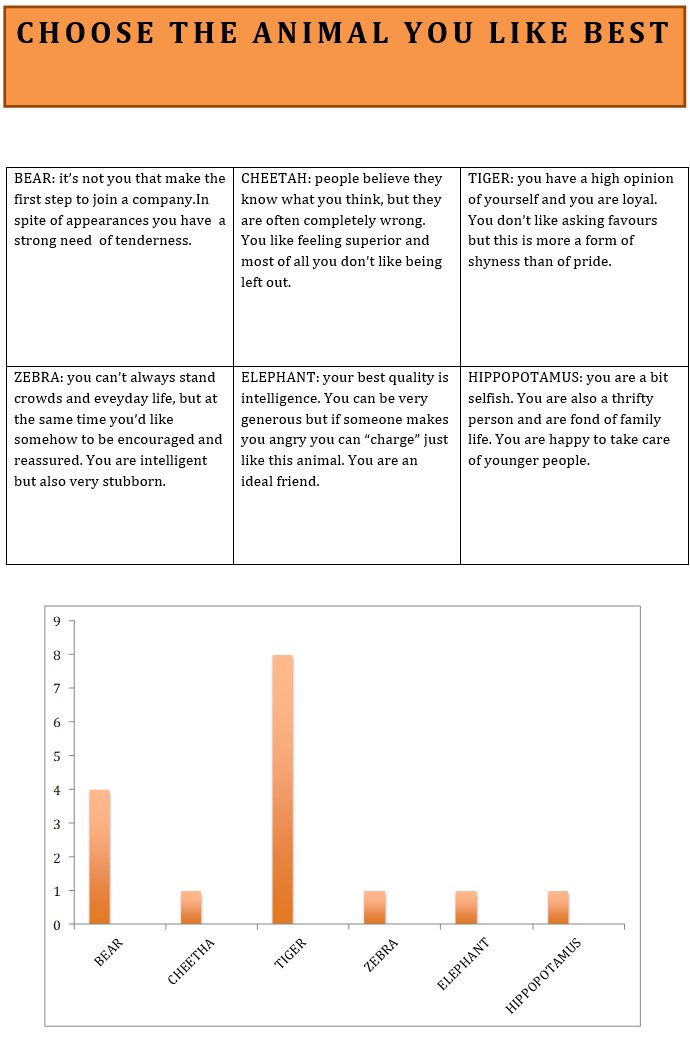
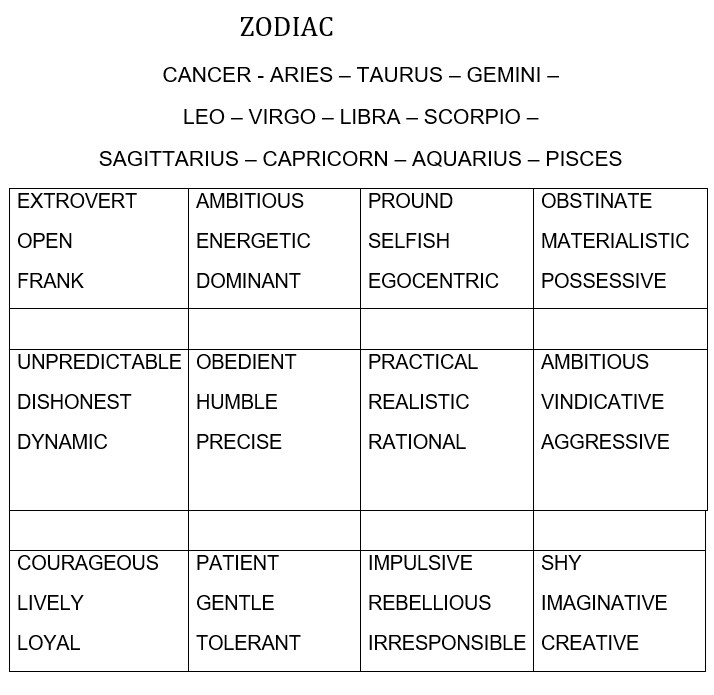
ATTIVITA’: inserisci il segno zodiacale alle varie terne di aggettivi, poi spiega se ti ritrovi nel profilo del tuo segno.
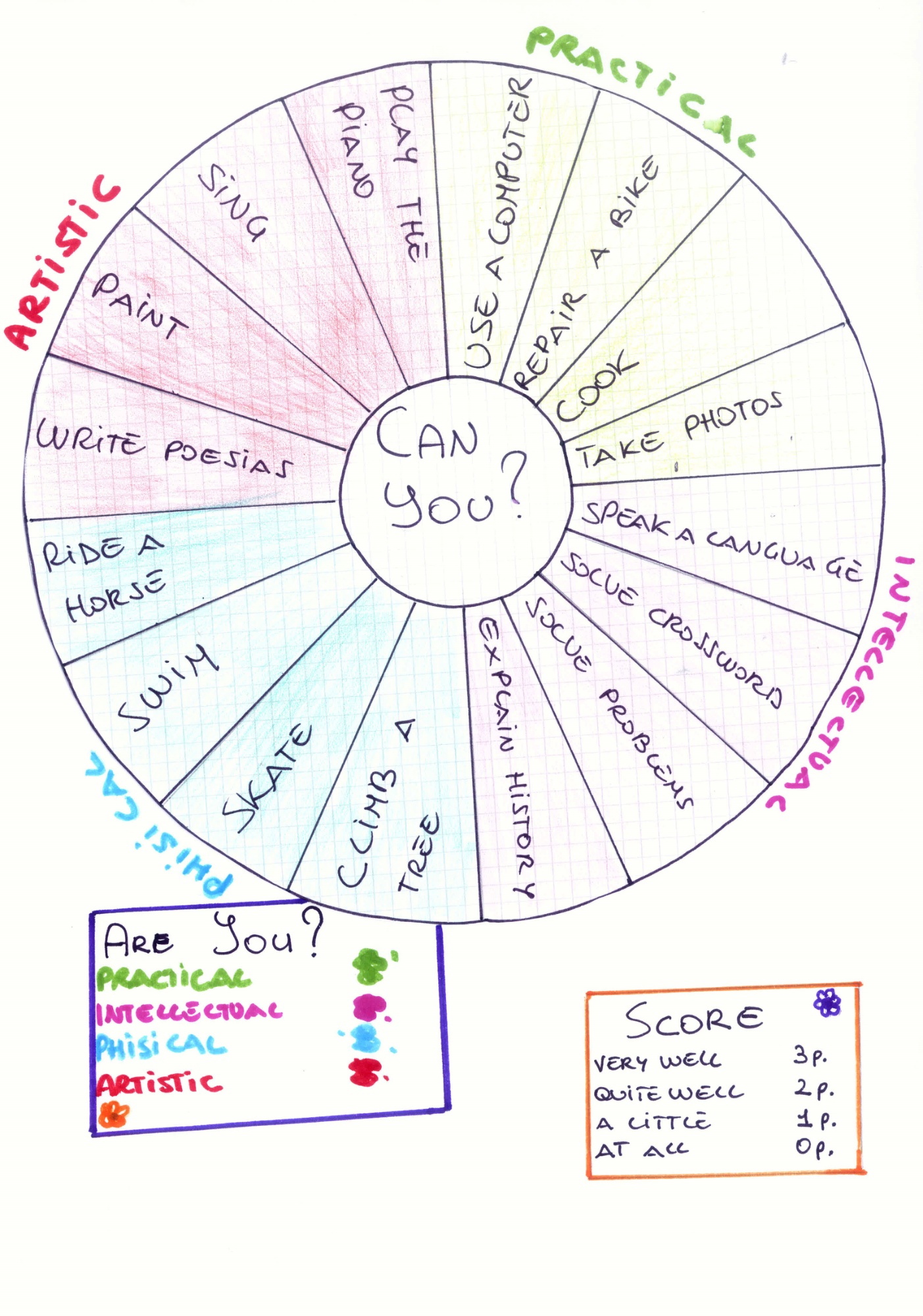
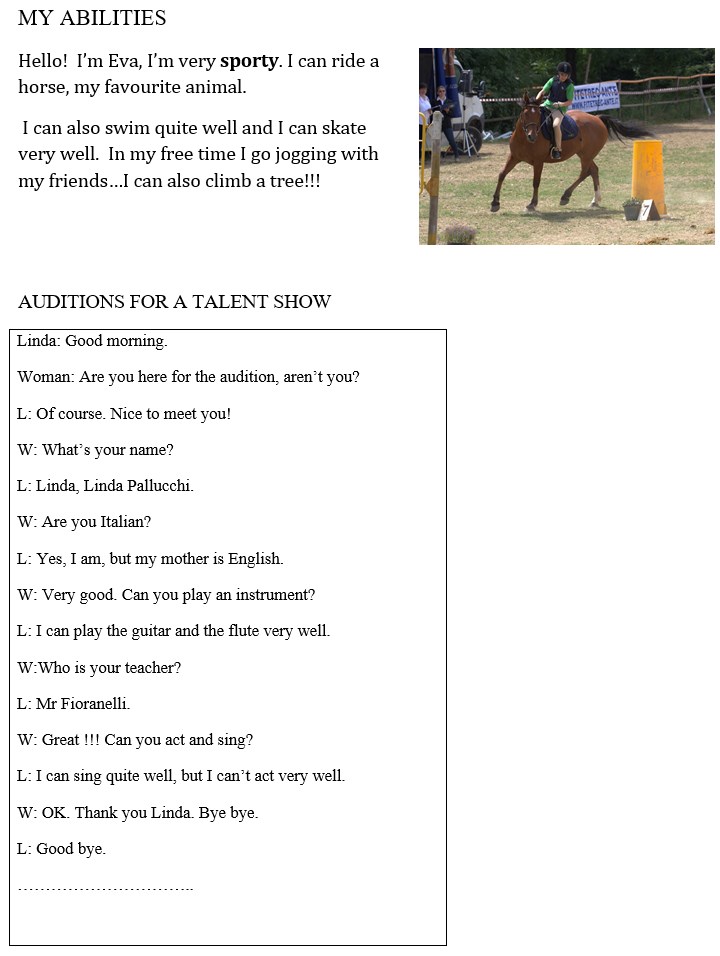
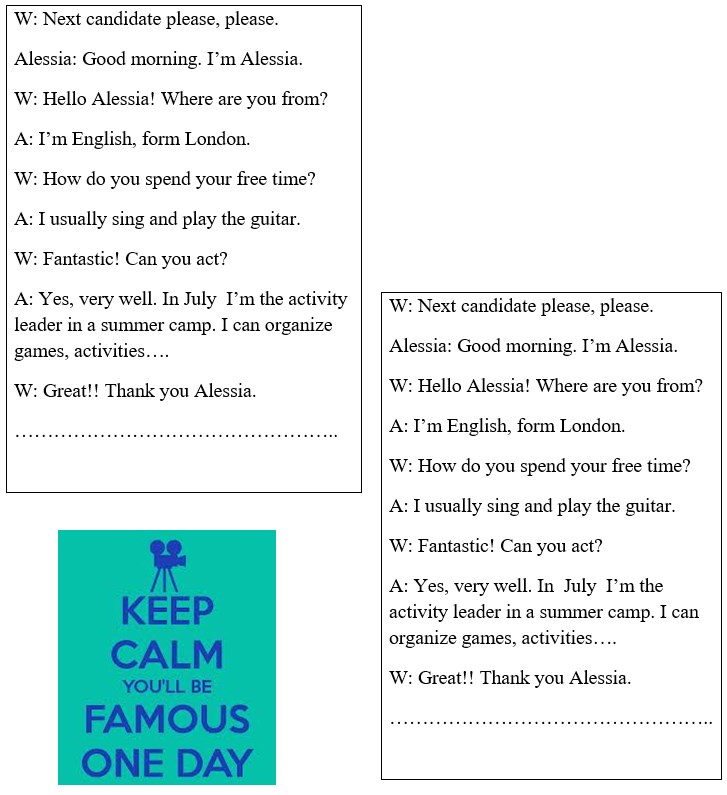
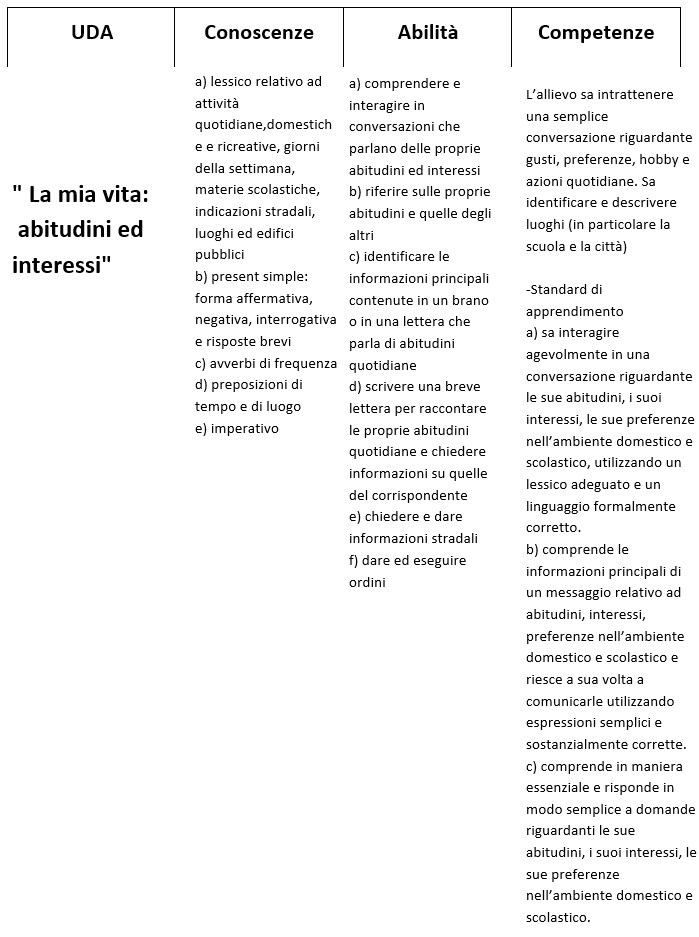
OUR LIKES AND HABITS
What kind of music do you like?
40% like rock
40% like rap
20% like pop
Do you like dancing ?
60% don’t like dancing
What’s your favourite TV programme?
“Dinamo” (20%) “ D-Max” ( 20%) “Arrow”, documentaries…..
Can you practice a sport ?
60% can practise a sport
What’s your favourite sport ?
40% like football
20% swimming
10% riding a horse
Do you like going out with your family?
83% answered “yes”
Can you play an instrument?
88% can play an instrument
What kind of mobile phone have you got?
45% have a touch screen phone
30% a smart phone
10% have not a mobile phone
How often do you surf the Net?
60% surf the Net every day
What subject do you consider more interesting?
40% like Maths or Science
25% prefer English
16% Geography
Do you like reading ?
60 % answered “ no”
OUR SCHOOL DAY
Hi, we’re Alex and Edoardo and we live in Sassoferrato. We attend the secondary school .
Our lessons start eight o’clock a.m. and finish at one o’clock p.m. . We go to school from Monday to Saturday but we don’t return to school in the afternoon. Every day we have a break at ten o’clock a.m. We don’t wear a uniform.
On Wednesday we have got Physic Education with Mr. Mandalà. He’s a bit strict but very funny. On Tuesday we have Art, a very interesting subject. We love music too! All students can play an instrument. We learn two languages: English and French or Spanish.
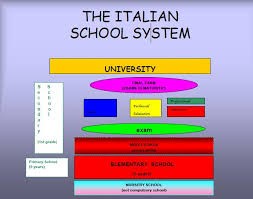
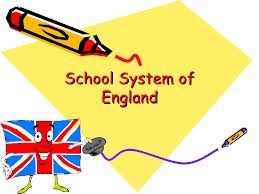
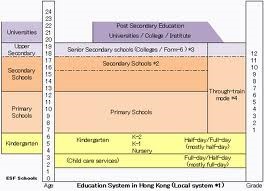
This is the school day of British students at Archway Secondary School (year 8) They go to school from Monday to Friday, but they don’t go on Saturday.
They start school at 8.50 and finish a 3.30p.m. They have a break in the morning at about 10.30 and in the afternoon at about 2pm. In the morning they have four lessons and there are three lessons in the afternoon.. When school finishes there are after-school clubs. (Music Club, Drama Club…) They have lunch in the school canteen but some students bring a packed lunch from home. They wear a school uniform.
Secondary school education.
Children must go to school until the age of sixteen, so when they are eleven, 90 per cent of them go to their local comprehensive school. These schools give children the chance to develop their different talents. For this reason they offer a variety of different subjects. However all children must follow the “national Curriculum” and study four main subjects: English, Maths, Science and a Modern Language, plus some other basic subjects that they can choose from among History, Geography, C.D.T. Craft, Design and Technology), Music, Art and P.E. (Phisical Education).
Please check the Methodology and Language for Primary course at Pilgrims website.
Please check the Creative Methodology for the Classroom course at Pilgrims website.
Literature to Expand Possibilities of Developing Abstraction
Eugenia Carrión Cantón, ArgentinaWorking Together on a Project
Paola Diotallevi, ItalyCreativity as the Key to Linguistic Competence and Life Skills
Marlene Rebecca Gumhold, AustriaHow Creative are Your Classes?
Victoria ?erban, Romania